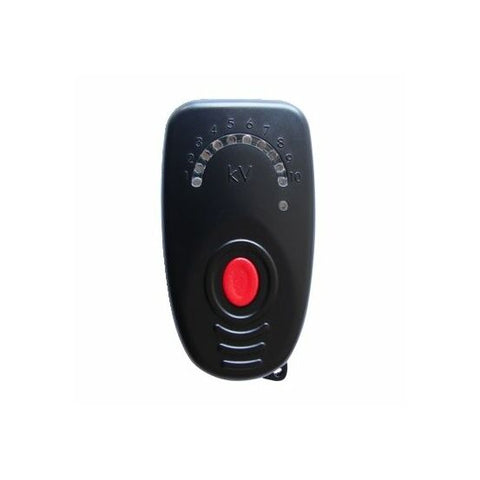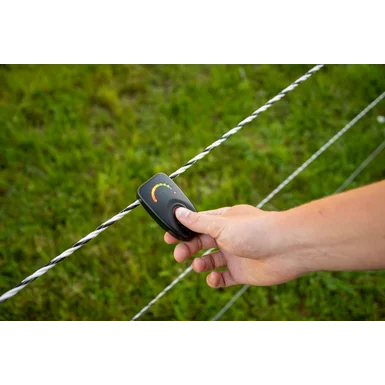



Chook Manor
KV Volt Fence Tester
Title
$50.00
$99.00you save $49.00
10KV LED Tester Showing Voltage on 10 levels 1000-10,000
Includes:
-
1 x 10KV LED tester
-
2 x batteries CR2016 3V
The be-all and end-all for a safe electric fence!
- with 10-stage LED control display (10 recessed LEDs) - very good readability even with strong light incidence
- Recessed button prevents unintentional operation
- No grounding via a grounding cable necessary
- Battery check indicator
- Battery operated (2* CR2016 3V lithium battery)
- Quality european made product
- Small and handy
- Uncomplicated and innovative
The LED tester is equipped with a bright, clearly visible, 10-stage LED control display. The tester measures in a voltage range from 1,000 to 10,000 volts. In addition, the fence tester has a quality indicator of the cap voltage. This is shown by the 10-stage LED display in colors ranging from red to green.
Another advantage is the small and handy housing. It is no problem to attach the tester to your key ring or to carry it always in your pocket. Practical!
The compactness of the fence tester is not the only advantage, however; the tester is also uncomplicated to use and impresses with its durability!
By pressing the big red button once, the push button, a voltage test is easily possible. The only thing to note is that the contact area on the back of the fence tester touches the conductor material. To do this, simply hold the wide metal strip located on the back of the tester against the conductor material to be measured and press the button - and you will receive feedback on the quality of your fence voltage. Uncomplicated and practical!
What tension should a herd-proof fence have?
The necessary tension for a herd-proof fence depends on the animals to be herded and the ground conditions. The following basic specifications can be used as guidelines for this:
- more than 2,000 volts for easy herding animals such as poultry, cow, horse, pig.
- more than 4,000 volts for normal soil conditions
- up to 1,000 volts more in dry soil conditions, due to the poorer conductivity of the soil
Another advantage is the small and handy housing. It is no problem to attach the tester to your key ring or to carry it always in your pocket. Practical!
The compactness of the fence tester is not the only advantage, however; the tester is also uncomplicated to use and impresses with its durability!
By pressing the big red button once, the push button, a voltage test is easily possible. The only thing to note is that the contact area on the back of the fence tester touches the conductor material. To do this, simply hold the wide metal strip located on the back of the tester against the conductor material to be measured and press the button - and you will receive feedback on the quality of your fence voltage. Uncomplicated and practical!
What tension should a herd-proof fence have?
The necessary tension for a herd-proof fence depends on the animals to be herded and the ground conditions. The following basic specifications can be used as guidelines for this:
- more than 2,000 volts for easy herding animals such as poultry, cow, horse, pig.
- more than 4,000 volts for normal soil conditions
- up to 1,000 volts more in dry soil conditions, due to the poorer conductivity of the soil

